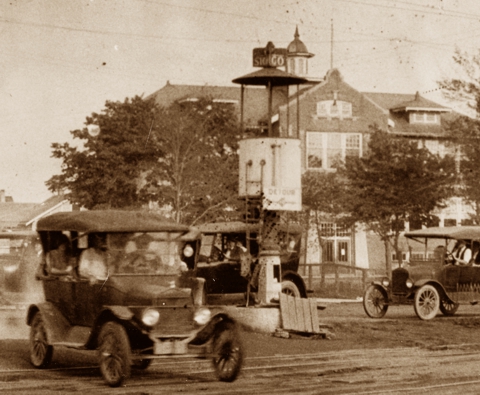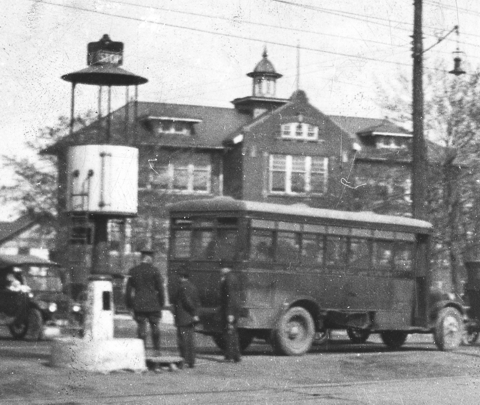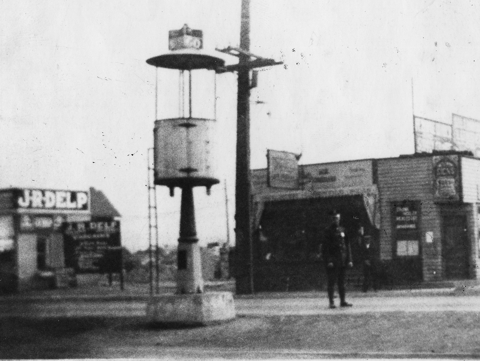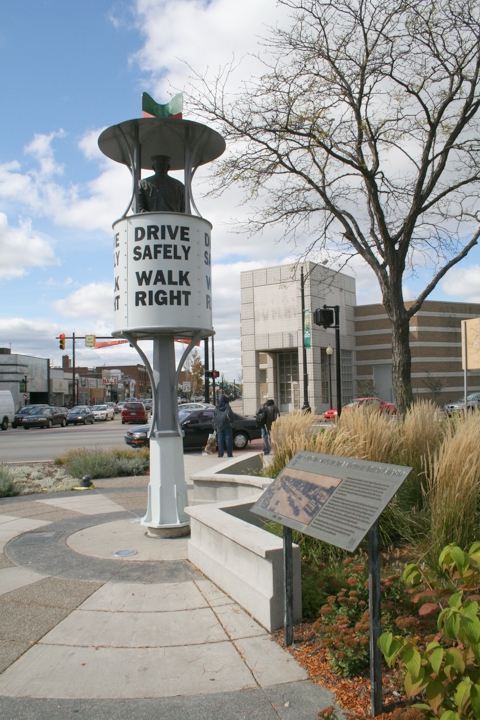![]()
The world's first recorded pedestrian fatality caused by an automobile occurred in London, 1896-at an auto show in the famous Crystal Palace. Means to control traffic caused by the new horseless carriage became an immediate concern, especially in urban areas.
Ferndale's Woodward & Nine Mile intersection in the early 1900s was too narrow for a police office to direct traffic at pavement center. So Ferndale's village commissioners, on April 26, 1920, passed a formal resolution to order a crow's nest from the City of Detroit, which had been experimenting with this signal means as the most effective traffic control method.
The order took three weeks to fill; installation at the Woodward & Nine Mile intersection was completed two weeks later. The Detroit United Railway operated its cars along the west side of Woodward and had a danger signal at the intersection, which meant that the installation of the crow's nest required the relocation of the train signal 8 feet from its original site.
Once the nest was in place, the police officer from his perch above Woodward could control automobile and railway traffic at the intersection. The nest was removed less than a decade later in the late 1920s when Woodward was widened and a traffic light was installed. The northbound strip of Woodward today covers the original location of the famous Ferndale landmark.
On Aug 9, 2004 City Council expressed interest in building the "Crow's Nest" and requested photographs of how it looked previously. In Oct 2005 the Michigan Dept of Transportation approved building the replica (after previously denying construction). In 2005, the Ferndale Downtown Development Authority (DDA) launched a search for an artist to create a sculpture of the Crow’s Nest to incorporate it into its new Woodward & Nine Mile Median Improvement Project.
Shan Sutherland from the Cranbrook Academy of Art was selected for the art project. His mother, Anne Sutherland, has also contributed to the art project with a bust of a police officer placed in the Crow’s Nest.
At 10AM on August 11, 2006, the replica was dedicated just a few feet from where the original stood. It can now be viewed by some 25,000+ drivers a day. This landmark serves as a reminder of Ferndale’s unique history, and of Ray White’s dedication to Ferndale.
|
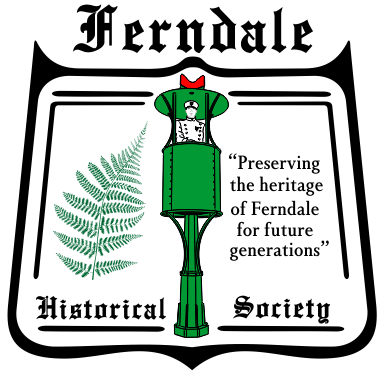
Unauthorized use or duplication of this material without expressed
and written consent from the Ferndale Historical Society is prohibited.
Revised: Feb 1, 2023
